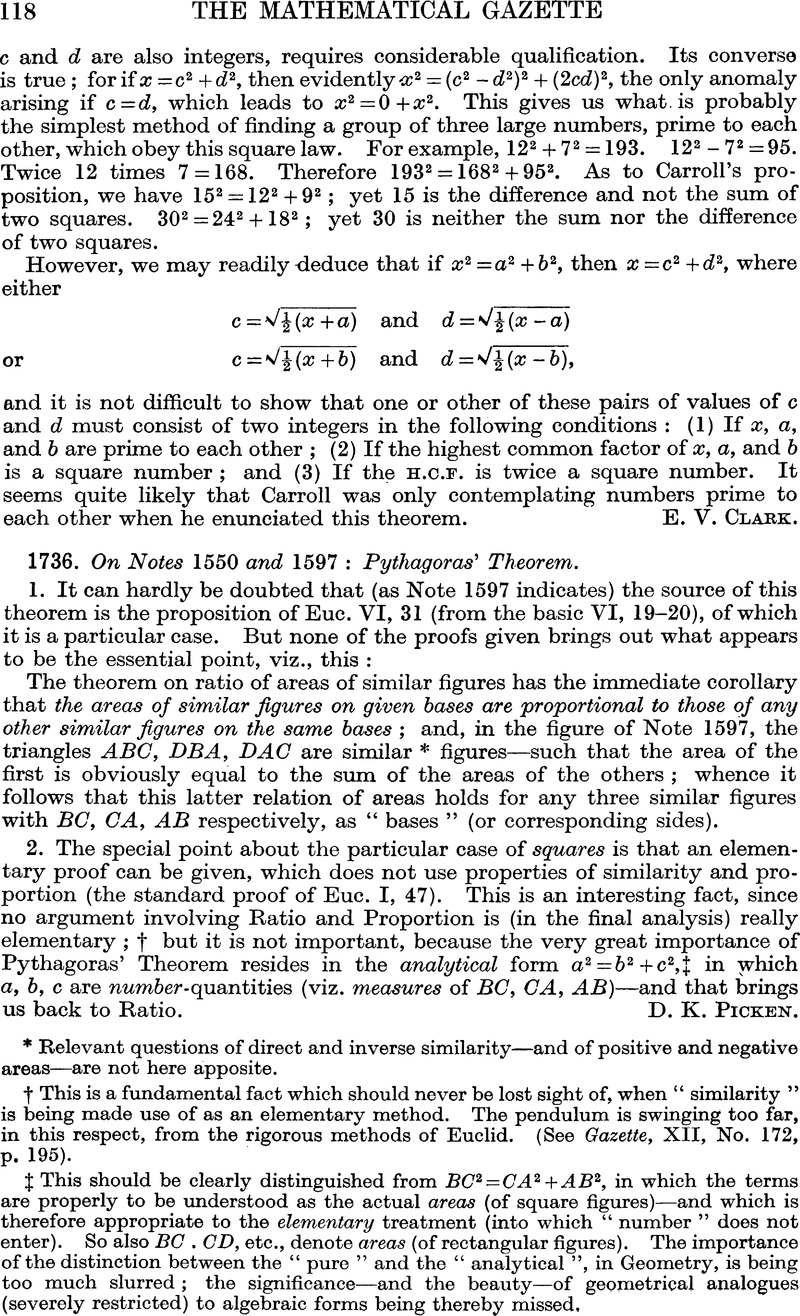No CrossRef data available.
Article contents
1736. On Notes 1550 and 1597: Pythagora's Theorem
Published online by Cambridge University Press: 03 November 2016
Abstract

- Type
- Mathematical Notes
- Information
- Copyright
- Copyright © Mathematical Association 1944
References
Page no 118 note * Relevant questions of direct and inverse similarity—and of positive and negative areas—are not here apposite.
Page no 118 note † This is a fundamental fact which should never be lost sight of, when “similarity” is being made use of as an elementary method. The pendulum is swinging too far, in this respect, from the rigorous methods of Euclid. (See Gazette, XII, No. 172, p. 195).
Page no 118 note ‡ This should be clearly distinguished from BC 2 = CA 2 + AB 2, in which the terms are properly to be understood as the actual areas (of square figures)—and which is therefore appropriate to the elementary treatment (into which “number” does not enter). So also BC . CD, etc., denote areas (of rectangular figures). The importance of the distinction between the “pure” and the “analytical”, in Geometry, is being too much slurred; the significance—and the beauty—of geometrical analogues (severely restricted) to algebraic forms being thereby missed




